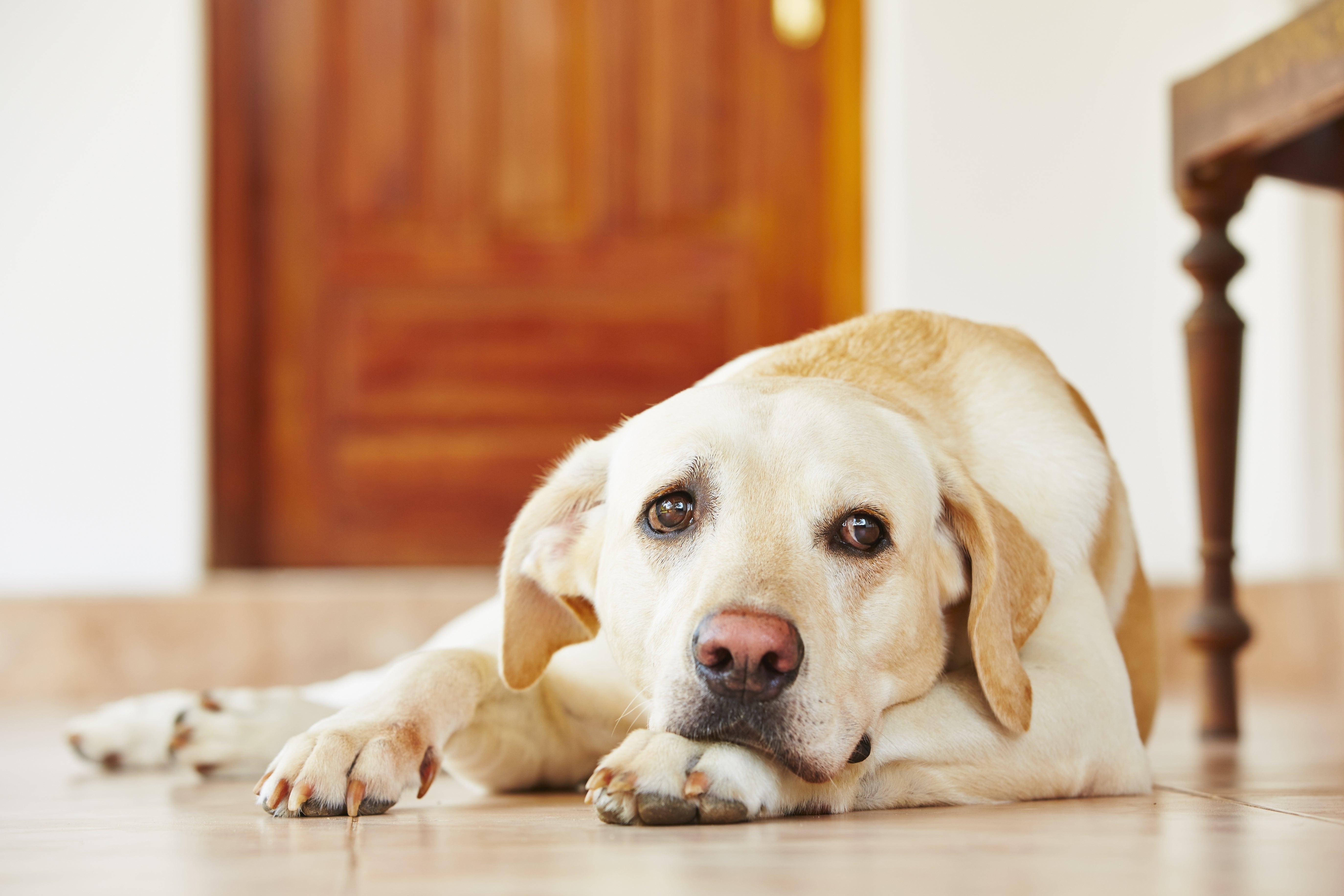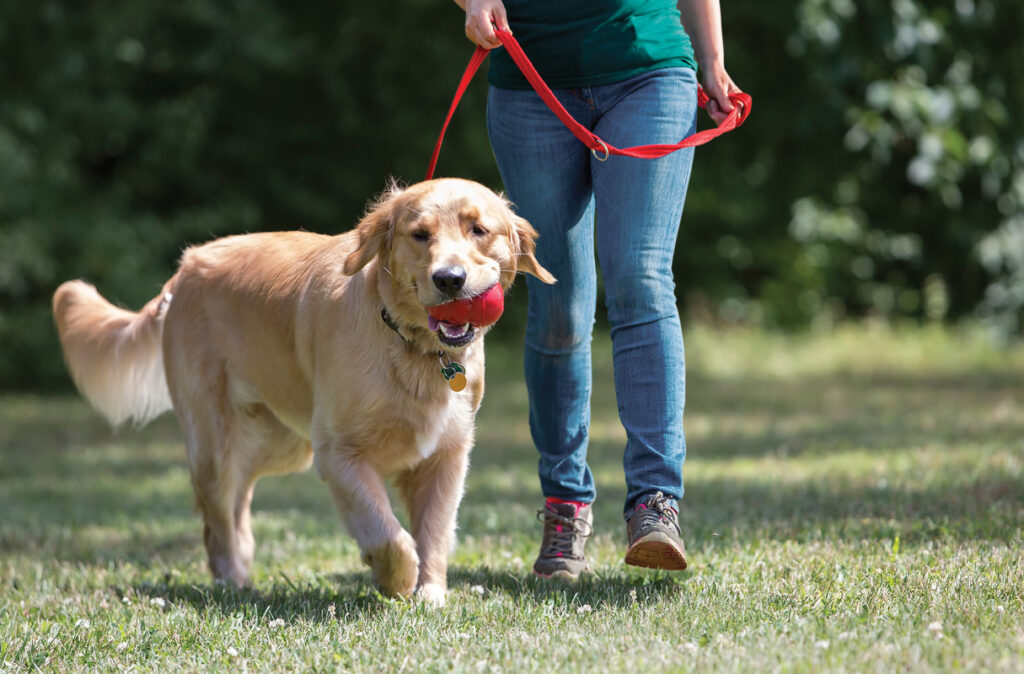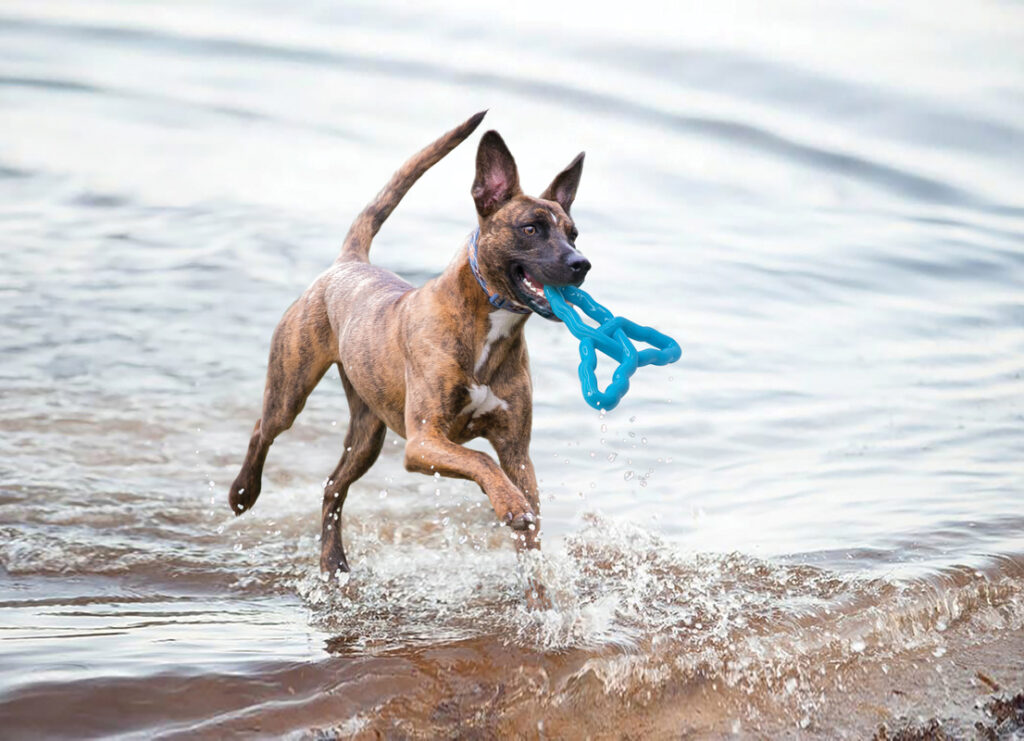Anxiety is a natural response to stress. It’s a feeling of fear or apprehension about what’s to come or even the fear of the unknown. While you may be anxious about giving a presentation or going on a first date, your dog has its own reasons for getting a case of the jitters. Even the happiest and healthiest dogs can experience anxiety but luckily, playtime can be an effective dog anxiety treatment. Let’s take a closer look at why your dog may be anxious and what you can do about it so that they can feel at ease.
What Causes Anxiety in Dogs?
In general, most fears and anxieties develop within 12 to 36 months of age—especially the 8- to 10-month phase. However, senior dogs can develop anxiety when their cognitive ability starts to decline. Here are the main causes of anxiety in dogs.
Separation Anxiety
Being left alone is perhaps the most common reason why dogs experience anxiety, which is why you may come home to a chewed up chair leg or torn up newspaper. It’s also possible that a dog is anxious if it has had multiple owners or was abandoned—it’s a feeling that remains with them.
A Bad Past
Dogs who were previously abused or exposed to a bad experience (like famine or dog fighting, for example) may experience perpetual anxiety, much like someone who came back from a war and is experiencing PTSD, or post-traumatic stress disorder.
Feeling Trapped
Some dogs don’t like the feeling of being locked away in a crate or perhaps it was traumatic for them to be at a shelter or kennel for too long.
Illness
A dog doesn’t know if it has cancer or another serious medical condition so physical pain contributes to anxiety and fear.
Social Deprivation
Dogs who are deprived of social interaction with other humans and pets are likely to be anxious when coming into contact with others. This is one of the reasons why playtime is so important when socializing a puppy.
Age
Senior dogs can have a decrease in hearing, sight and smell, which can cause some anxiety. Additionally Sundowner Syndrome, also called Doggy Dementia can drive anxiety. If you are worried about this, come into the KONG Club app and talk 24/7 with out vets and pet coaches, who can help address your questions and create a plan for your senior dog.
Certain Noises
Some hounds are simply scaredy-dogs who are afraid of inconsistent noises like a booming thunderstorm, fireworks, a loud movie (think shooting, screaming), or construction.
Symptoms of Anxiety in Dogs
Not sure if your pooch is anxious or if it’s something else? Keep an eye out for these top anxiety symptoms in dogs.
- Excessive vocalization such as barking, whining, whimpering, or crying
- Tucked in tail
- Goes into hiding
- Lethargy and lack of interest in normal activities
- Trembling
- Excessive cleaning or biting of one’s self
- Diarrhea
- Lack of appetite
- Destructive behavior when left alone
Helping Dogs with Anxiety
Wondering how to calm a dog with anxiety? While it’s never a bad idea to check with your vet to make sure there isn’t an underlying medical condition, here are some ways to help keep your pup calm and happy.
Make Alone Time a Positive Experience
If separation anxiety is the reason why your dog is anxious, try associating their alone time with something that makes them feel content. For example, give them a treat as you open the door or grab your keys. After a while, they’ll associate those actions/sounds with something they enjoy. It’s also a good idea to leave toys like squeakers or puzzle toys (with treats) to keep them occupied while you’re away. Whatever you do, don’t make a big production out of leaving, even if you feel guilty. Excessive cuddling and kissing are only going to make things harder for your pooch.
Exercise
Physical activity is great for mental and physical health as it helps your dog burn off any nervous energy while tuckering them out. If possible, take your pooch for a quick walk before leaving the house.
Play Music
Like humans, a dog’s anxiety can be lessened just by listening to the right music! There are several outlets that provide species-specific tunes to help keep dogs of all kinds calm and relaxed. This can be a great option for when you’re leaving the house or even for senior dogs who are experiencing a cognitive decline.
Invest in a Weighted Blanket
Much like the ThunderShirt (another option for anxiety), weighted blankets provide a form of Deep Touch Pressure (DTP) that imitates serotonin (the feel-good hormone) that’s released in the brain when you get a hug from someone you love. With that said, this method has been known to calm anxious dogs as it naturally moves about. While you can also perform a doggy massage, the shirt and blanket options are good for when you’re busy or not home.
Socialization
While the socialization period should have begun when your dog was a puppy, perhaps you adopted your dog later in life and the pup stage was out of your hands. While it’s not as easy to socialize an older pooch, it’s not impossible as long as you do it slowly by gradually introducing your furball to other humans and hounds.
Play the Anxiety Away with KONG Club
One of the best ways to distract your dog and ease unwanted anxiety is by providing them with the right toys for solo and one-on-one playtime! When a dog is engaged in play, they are mentally and physically stimulated so they’re less apt to have feelings of angst. Take the guesswork out of wondering which toys are best by talking with your KONG Club pet coach to help reduce your pups anxiety.



